 W
WElectronic engineering is an electrical engineering discipline which utilizes nonlinear and active electrical components to design electronic circuits, devices, integrated circuits and their systems. The discipline typically also designs passive electrical components, usually based on printed circuit boards.
 W
WThe autodyne circuit was an improvement to radio signal amplification using the De Forest Audion vacuum tube amplifier. By allowing the tube to oscillate at a frequency slightly different from the desired signal, the sensitivity over other receivers was greatly improved. The autodyne circuit was invented by Edwin Howard Armstrong of Columbia University, New York, NY. He inserted a tuned circuit in the output circuit of the Audion vacuum tube amplifier. By adjusting the tuning of this tuned circuit, Armstrong was able to dramatically increase the gain of the Audion amplifier. Further increase in tuning resulted in the Audion amplifier reaching self-oscillation.
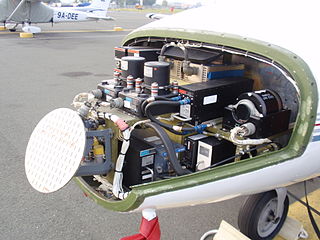 W
WAvionics are the electronic systems used on aircraft, artificial satellites, and spacecraft. Avionic systems include communications, navigation, the display and management of multiple systems, and the hundreds of systems that are fitted to aircraft to perform individual functions. These can be as simple as a searchlight for a police helicopter or as complicated as the tactical system for an airborne early warning platform.
 W
WIn electronics, biasing is the setting of initial operating conditions of an active device in an amplifier. Many electronic devices, such as diodes, transistors and vacuum tubes, whose function is processing time-varying (AC) signals, also require a steady (DC) current or voltage at their terminals to operate correctly. This current or voltage is a bias. The AC signal applied to them is superpositioned on this DC bias current or voltage.
 W
WBipolar transistors must be properly biased to operate correctly. In circuits made with individual devices, biasing networks consisting of resistors are commonly employed. Much more elaborate biasing arrangements are used in integrated circuits, for example, bandgap voltage references and current mirrors. The voltage divider configuration achieves the correct voltages by the use of resistors in certain patterns. By selecting the proper resistor values, stable current levels can be achieved that vary only little over temperature and with transistor properties such as β.
 W
WA chamfer or is a transitional edge between two faces of an object. Sometimes defined as a form of bevel, it is often created at a 45° angle between two adjoining right-angled faces.
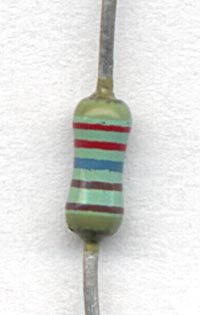 W
WAn electronic color code is used to indicate the values or ratings of electronic components, usually for resistors, but also for capacitors, inductors, diodes and others. A separate code, the 25-pair color code, is used to identify wires in some telecommunications cables. Different codes are used for wire leads on devices such as transformers or in building wiring.
 W
WA computer module is a selection of independent electronic circuits packaged onto a circuit board to provide a basic function within a computer. An example might be an inverter or flip-flop, which would require two or more transistors and a small number of additional supporting devices. Modules would be inserted into a chassis and then wired together to produce a larger logic unit, like an adder.
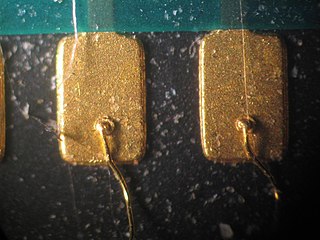 W
WContact pads or bond pads are designated surface areas of a printed circuit board (PCB) or die of an integrated circuit. Possibilities to contact to pads include soldering, wirebonding, flip chip mounting, or probe needles.
 W
WAlberto Diaspro was born in Genoa, Italy, on April 7, 1959. He received his doctoral degree in electronic engineering from the University of Genoa, Italy, in 1983. He is a university professor in applied physics. He is Head of the Nanophysics Department of the Italian Institute of Technology.
 W
WElectrical engineering is an engineering discipline concerned with the study, design, and application of equipment, devices, and systems which use electricity, electronics, and electromagnetism. It emerged as an identifiable occupation in the latter half of the 19th century after commercialization of the electric telegraph, the telephone, and electrical power generation, distribution, and use.
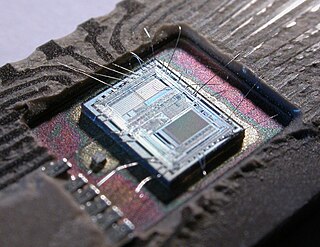 W
WAn electronic circuit is composed of individual electronic components, such as resistors, transistors, capacitors, inductors and diodes, connected by conductive wires or traces through which electric current can flow. To be referred to as electronic, rather than electrical, generally at least one active component must be present. The combination of components and wires allows various simple and complex operations to be performed: signals can be amplified, computations can be performed, and data can be moved from one place to another.
 W
WElectronic paper, also sometimes electronic ink, e-ink or electrophoretic display, are display devices that mimic the appearance of ordinary ink on paper. Unlike conventional flat panel displays that emit light, electronic paper displays reflect light like paper. This may make them more comfortable to read, and provide a wider viewing angle than most light-emitting displays. The contrast ratio in electronic displays available as of 2008 approaches newspaper, and newly (2008) developed displays are slightly better. An ideal e-paper display can be read in direct sunlight without the image appearing to fade.
 W
WAn electronic symbol is a pictogram used to represent various electrical and electronic devices or functions, such as wires, batteries, resistors, and transistors, in a schematic diagram of an electrical or electronic circuit. These symbols are largely standardized internationally today, but may vary from country to country, or engineering discipline, based on traditional conventions.
 W
WAn ESD simulator, also known as an ESD gun, is a handheld unit used to test the immunity of devices to electrostatic discharge (ESD). These simulators are used in special electromagnetic compatibility (EMC) laboratories. ESD pulses are fast, high-voltage pulses created when two objects with different electrical charges come into close proximity or contact. Recreating them in a test environment helps to verify that the device under test is immune to static electricity discharges.
 W
WA field-replaceable unit (FRU) is a printed circuit board, part, or assembly that can be quickly and easily removed from a computer or other piece of electronic equipment, and replaced by the user or a technician without having to send the entire product or system to a repair facility. FRUs allow a technician lacking in-depth product knowledge to isolate faults and replace faulty components. The granularity of FRUs in a system impacts total cost of ownership and support, including the costs of stocking spare parts, where spares are deployed to meet repair time goals, how diagnostic tools are designed and implemented, levels of training for field personnel, whether end-users can do their own FRU replacement, etc.
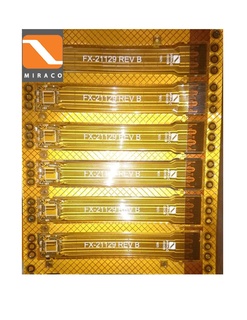 W
WFlexible electronics, also known as flex circuits, is a technology for assembling electronic circuits by mounting electronic devices on flexible plastic substrates, such as polyimide, PEEK or transparent conductive polyester film. Additionally, flex circuits can be screen printed silver circuits on polyester. Flexible electronic assemblies may be manufactured using identical components used for rigid printed circuit boards, allowing the board to conform to a desired shape, or to flex during its use.
 W
WA flexible organic light-emitting diode (FOLED) is a type of organic light-emitting diode (OLED) incorporating a flexible plastic substrate on which the electroluminescent organic semiconductor is deposited. This enables the device to be bent or rolled while still operating. Currently the focus of research in industrial and academic groups, flexible OLEDs form one method of fabricating a rollable display.
 W
WIn electronics, a flip-flop or latch is a circuit that has two stable states and can be used to store state information – a bistable multivibrator. The circuit can be made to change state by signals applied to one or more control inputs and will have one or two outputs. It is the basic storage element in sequential logic. Flip-flops and latches are fundamental building blocks of digital electronics systems used in computers, communications, and many other types of systems.
 W
WA footprint or land pattern is the arrangement of pads or through-holes used to physically attach and electrically connect a component to a printed circuit board. The land pattern on a circuit board matches the arrangement of leads on a component.
 W
WIn electronic engineering, ground bounce is a phenomenon associated with transistor switching where the gate voltage can appear to be less than the local ground potential, causing the unstable operation of a logic gate.
 W
WThe gyrator–capacitor model - sometimes also the capacitor-permeance model - is a lumped-element model for magnetic circuits, that can be used in place of the more common resistance–reluctance model. The model makes permeance elements analogous to electrical capacitance rather than electrical resistance. Windings are represented as gyrators, interfacing between the electrical circuit and the magnetic model.
 W
WAn impulse generator is an electrical apparatus which produces very short high-voltage or high-current surges. Such devices can be classified into two types: impulse voltage generators and impulse current generators. High impulse voltages are used to test the strength of electric power equipment against lightning and switching surges. Also, steep-front impulse voltages are sometimes used in nuclear physics experiments. High impulse currents are needed not only for tests on equipment such as lightning arresters and fuses but also for many other technical applications such as lasers, thermonuclear fusion, and plasma devices.
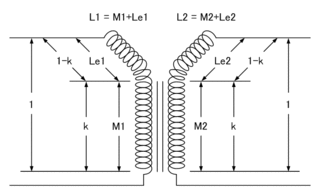 W
WIn electrical engineering, two conductors are said to be inductively coupled or magnetically coupled when they are configured in a way such that change in current through one wire induces a voltage across the ends of the other wire through electromagnetic induction. A changing current through the first wire creates a changing magnetic field around it by Ampere's circuital law. The changing magnetic field induces an electromotive force in the second wire by Faraday's law of induction. The amount of inductive coupling between two conductors is measured by their mutual inductance.
 W
WThe Institution of Electronics and Telecommunication Engineers (IETE) is an Indian professional society devoted to the advancement of science, technology, electronics, telecommunication and information technology.
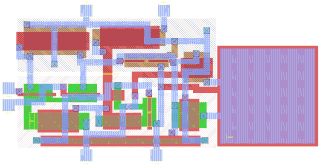 W
WIntegrated circuit design, or IC design, is a sub-field of electronics engineering, encompassing the particular logic and circuit design techniques required to design integrated circuits, or ICs. ICs consist of miniaturized electronic components built into an electrical network on a monolithic semiconductor substrate by photolithography.
 W
WJohnson–Nyquist noise is the electronic noise generated by the thermal agitation of the charge carriers inside an electrical conductor at equilibrium, which happens regardless of any applied voltage. Thermal noise is present in all electrical circuits, and in sensitive electronic equipment such as radio receivers can drown out weak signals, and can be the limiting factor on sensitivity of an electrical measuring instrument. Thermal noise increases with temperature. Some sensitive electronic equipment such as radio telescope receivers are cooled to cryogenic temperatures to reduce thermal noise in their circuits. The generic, statistical physical derivation of this noise is called the fluctuation-dissipation theorem, where generalized impedance or generalized susceptibility is used to characterize the medium.
 W
WIn electrical engineering, a load profile is a graph of the variation in the electrical load versus time. A load profile will vary according to customer type, temperature and holiday seasons. Power producers use this information to plan how much electricity they will need to make available at any given time. Teletraffic engineering uses a similar load curve.
 W
WA TDR moisture sensor employs time-domain reflectometry (TDR) to measure moisture content indirectly based on the correlation to electric and dielectric properties of materials, such as soil, agrarian products, snow, wood or concrete.
 W
WThe memory cell is the fundamental building block of computer memory. The memory cell is an electronic circuit that stores one bit of binary information and it must be set to store a logic 1 and reset to store a logic 0. Its value is maintained/stored until it is changed by the set/reset process. The value in the memory cell can be accessed by reading it.
 W
WMesh analysis is a method that is used to solve planar circuits for the currents at any place in the electrical circuit. Planar circuits are circuits that can be drawn on a plane surface with no wires crossing each other. A more general technique, called loop analysis can be applied to any circuit, planar or not. Mesh analysis and loop analysis both make use of Kirchhoff’s voltage law to arrive at a set of equations guaranteed to be solvable if the circuit has a solution. Mesh analysis is usually easier to use when the circuit is planar, compared to loop analysis.
 W
WMulti-project chip (MPC), and multi-project wafer (MPW) semiconductor manufacturing arrangements allow customers to share mask and microelectronics wafer fabrication cost between several designs or projects.
 W
WOhm's law states that the current through a conductor between two points is directly proportional to the voltage across the two points. Introducing the constant of proportionality, the resistance, one arrives at the usual mathematical equation that describes this relationship:
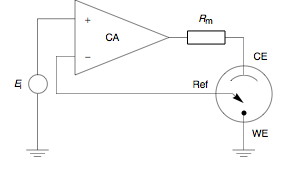 W
WA potentiostat is the electronic hardware required to control a three electrode cell and run most electroanalytical experiments. A Bipotentiostat and polypotentiostat are potentiostats capable of controlling two working electrodes and more than two working electrodes, respectively.
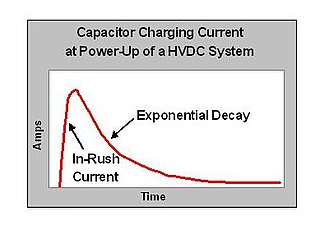 W
WPre-charge of the powerline voltages in a high voltage DC application is a preliminary mode which limits the inrush current during the power up procedure.
 W
WA printed circuit board (PCB) is a laminated sandwich structure of conductive and insulating layers. PCBs have two complementary functions. The first is to affix electronic components in designated locations on the outer layers by means of soldering. The second is to provide reliable electrical connections between the component's terminals in a controlled manner often referred to as PCB design. Each of the conductive layers is designed with an artwork pattern of conductors that provides electrical connections on that conductive layer. Another manufacturing process adds vias, plated-through holes that allow interconnections between layers.
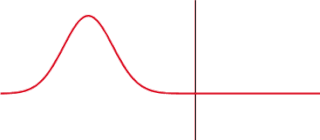 W
WIn physics and electrical engineering the reflection coefficient is a parameter that describes how much of a wave is reflected by an impedance discontinuity in the transmission medium. It is equal to the ratio of the amplitude of the reflected wave to the incident wave, with each expressed as phasors. For example, it is used in optics to calculate the amount of light that is reflected from a surface with a different index of refraction, such as a glass surface, or in an electrical transmission line to calculate how much of the electromagnetic wave is reflected by an impedance. The reflection coefficient is closely related to the transmission coefficient. The reflectance of a system is also sometimes called a "reflection coefficient".
 W
WFor power semiconductor devices, the safe operating area (SOA) is defined as the voltage and current conditions over which the device can be expected to operate without self-damage.
 W
WA shift register lookup table, also shift register LUT or SRL, refers to a component in digital circuitry. It is essentially a shift register of variable length. The length of SRL is set by driving address pins high or low and can be changed dynamically, if necessary.
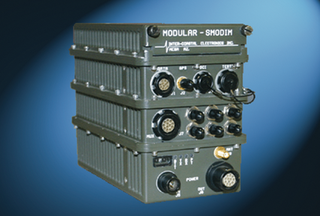 W
WThe Smart Onboard Data Interface Module (SMODIM) is used by the United States Army and foreign militaries for live simulated weapons training on military platforms. The SMODIM is the primary component of the Longbow Apache Tactical Engagement Simulation System that provides weapons systems training and collective Force-on-Force live training participation.
 W
WThe Standard Commands for Programmable Instruments defines a standard for syntax and commands to use in controlling programmable test and measurement devices, such as automatic test equipment and electronic test equipment.
 W
WSooraj Surendran is an Indian technologist and electronic engineering graduate from Anna University. He has made significant contributions to motorized wheelchair deployment in Tamil Nadu.
 W
WA terminal is the point at which a conductor from a component, device or network comes to an end. Terminal may also refer to an electrical connector at this endpoint, acting as the reusable interface to a conductor and creating a point where external circuits can be connected. A terminal may simply be the end of a wire or it may be fitted with a connector or fastener.
 W
WThermal runaway describes a process that is accelerated by increased temperature, in turn releasing energy that further increases temperature. Thermal runaway occurs in situations where an increase in temperature changes the conditions in a way that causes a further increase in temperature, often leading to a destructive result. It is a kind of uncontrolled positive feedback.
 W
WTitanium oxide may refer to:Titanium dioxide (titanium(IV) oxide), TiO2 Titanium(II) oxide (titanium monoxide), TiO, a non-stoichiometric oxide Titanium(III) oxide (dititanium trioxide), Ti2O3 Ti3O Ti2O δ-TiOx (x= 0.68–0.75) TinO2n−1 where n ranges from 3–9 inclusive, e.g. Ti3O5, Ti4O7, etc.
 W
WMetal whiskering is a phenomenon which occurs in electrical devices when metals form long whisker-like projections over time. Tin whiskers were noticed and documented in the vacuum tube era of electronics early in the 20th century in equipment that used pure, or almost pure, tin solder in their production. It was noticed that small metal hairs or tendrils grew between metal solder pads causing short circuits. Metal whiskers form in the presence of compressive stress. Zinc, cadmium, and even lead whiskers have been documented. Many techniques are used to mitigate the problem including changes to the annealing process, addition of elements like copper and nickel, and the inclusion of conformal coatings. Traditionally, lead has been added to slow down whisker growth in tin-based solders.
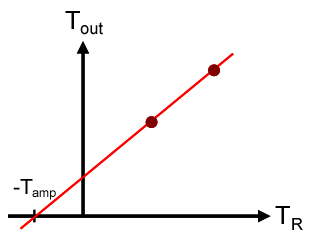 W
WThe Y-factor method is a widely used technique for measuring the gain and noise temperature of an amplifier. It is based on the Johnson–Nyquist noise of a resistor at two different, known temperatures.